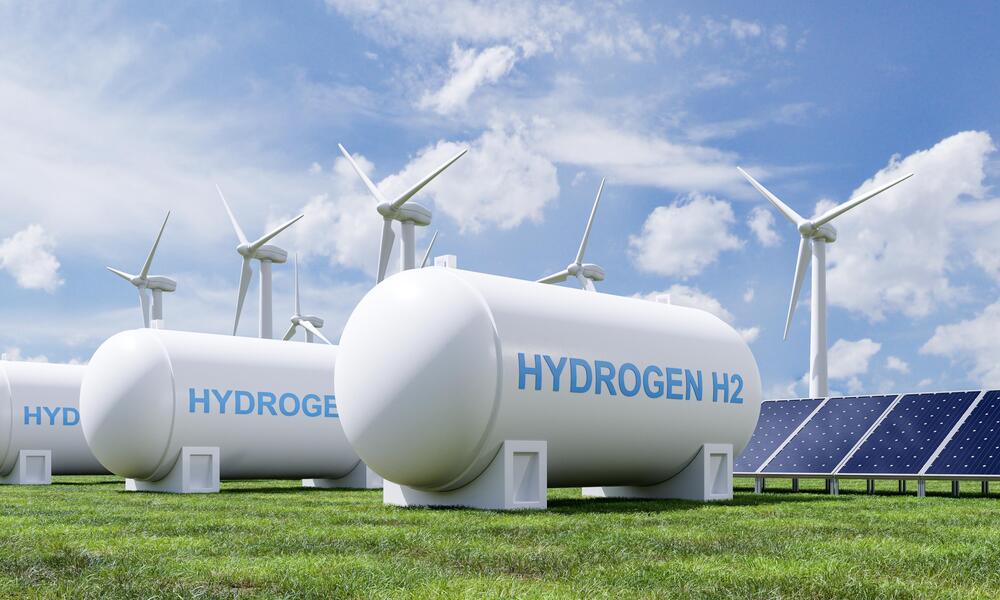Ecuador is taking steps to produce green hydrogen, a clean and sustainable energy source that is produced using hydroelectric, solar photovoltaic, biomass, and wind.
German company Linde, one of the world’s largest gas production and engineering companies, has been operating in Ecuador for 60 years, and is involved in the production of green hydrogen.
The company is part of the Green Hydrogen Association (H2), which was created at the initiative of the German Ecuadorian Chamber of Commerce, and has nine members including logistics companies, renewable energy providers, cement producers, and academia.
Linde is a world leader in hydrogen, with over 250 hydrogen filling stations for cars and trucks globally, including operations in Germany and California. Its filling stations, whether liquid or gaseous, take only 3 to 4 minutes to fill up cars and trucks, and have a range of 500 kilometers. The company is well positioned to support Ecuador in developing its green hydrogen activities.
The Green Hydrogen Association has established a work plan to unite all the actors involved with the possible areas of applications of green hydrogen, with the main objective of fostering a green hydrogen ecosystem. This requires networking, the main technologies, training, and close collaboration with the government, international cooperation, German universities, and their counterparts, such as federal government research institutions and companies from that country.
The association is looking to add more members, as well as regulatory support for specific green hydrogen policies and the reduction of emissions. Close contact with the authorities is essential, and the H2 has already signed agreements with the Ministry of Energy and Mines, which has contracted the development of a roadmap. The Ministries of Environment and Production, and the Presidency of the Republic are also part of the public-private dialogue.
Ecuador’s potential for green hydrogen is very good, as it has hydroelectric plants and projects for other types of renewable energy that will generate 500 megawatts of renewable energy. According to data from Celep Ep, Ecuador plans to generate 520 million tons of green hydrogen by 2050, with more than 92% of the energy coming from renewable sources, including hydroelectric plants.
The ‘Green Hydrogen Global Market Report 2021: Covid-19 Growth And Change’ report estimates that by 2025, the market for this clean fuel will reach $2.94 billion. The market is growing rapidly in Latin America, with Chile in the last phase of studies and implementation of large projects. Colombia and Brazil are also advancing quickly, and for Ecuador, green hydrogen could be a significant leap forward, as it would be a paradigm shift towards a green economy and green societies. Some have compared the opportunity to Ecuador’s “first barrel of oil.”
Green hydrogen has different applications beyond energy production, including as industrial raw material for making fertilizers, which have gone substantially up in price due to the war in Ukraine. Sustainable agricultural production and a growing contribution of agro-exports could be achieved by producing fertilizers with green hydrogen. The electricity sector can also store green hydrogen, and there are possibilities for income from exports.
The transport sector is seen as having the biggest potential application for green hydrogen in Ecuador, as the country does not have trains, and all merchandise is transported by road. The objective is to change heavy transport, which generates more emissions, and a pilot project is needed to break the ice. Large logistics groups are interested in starting a pilot project with a truck that works with green hydrogen. The H2 is promoting and helping with financing and the approval of regulatory conditions.
In May, a forum for the transport and industrial sector will be held in Quito and Guayaquil. In the second half of 2023, a group of Ecuadorians will be sent on a knowledge mission to Germany to learn about the green hydrogen value chain.
Linde’s history with Ecuador
Linde develops petrochemical plants, air gas separation plants, and refineries, is committed to the decarbonization of its activities and aims to be carbon neutral by 2050.
In Ecuador, they have an air gas separation plant in Guayaquil that produces oxygen, nitrogen, and argon for various industries.
They have developed burners that save 50% of fossil fuels in two of Ecuador’s main steel mills, reducing CO2 emissions by 60%.
Linde believes that there should be collaboration between private companies and the state, as well as legislation that provides incentives for those dedicated to promoting cleaner fuels, since the costs of this technology are currently high.
Linde is interested in contributing to the decarbonization of Ecuador and bringing its state-of-the-art technologies to the country. In Latin America, there are three pilot tests for the use of green hydrogen, and Linde wants to bring that experience to Ecuador for pilot projects.


0 Comments